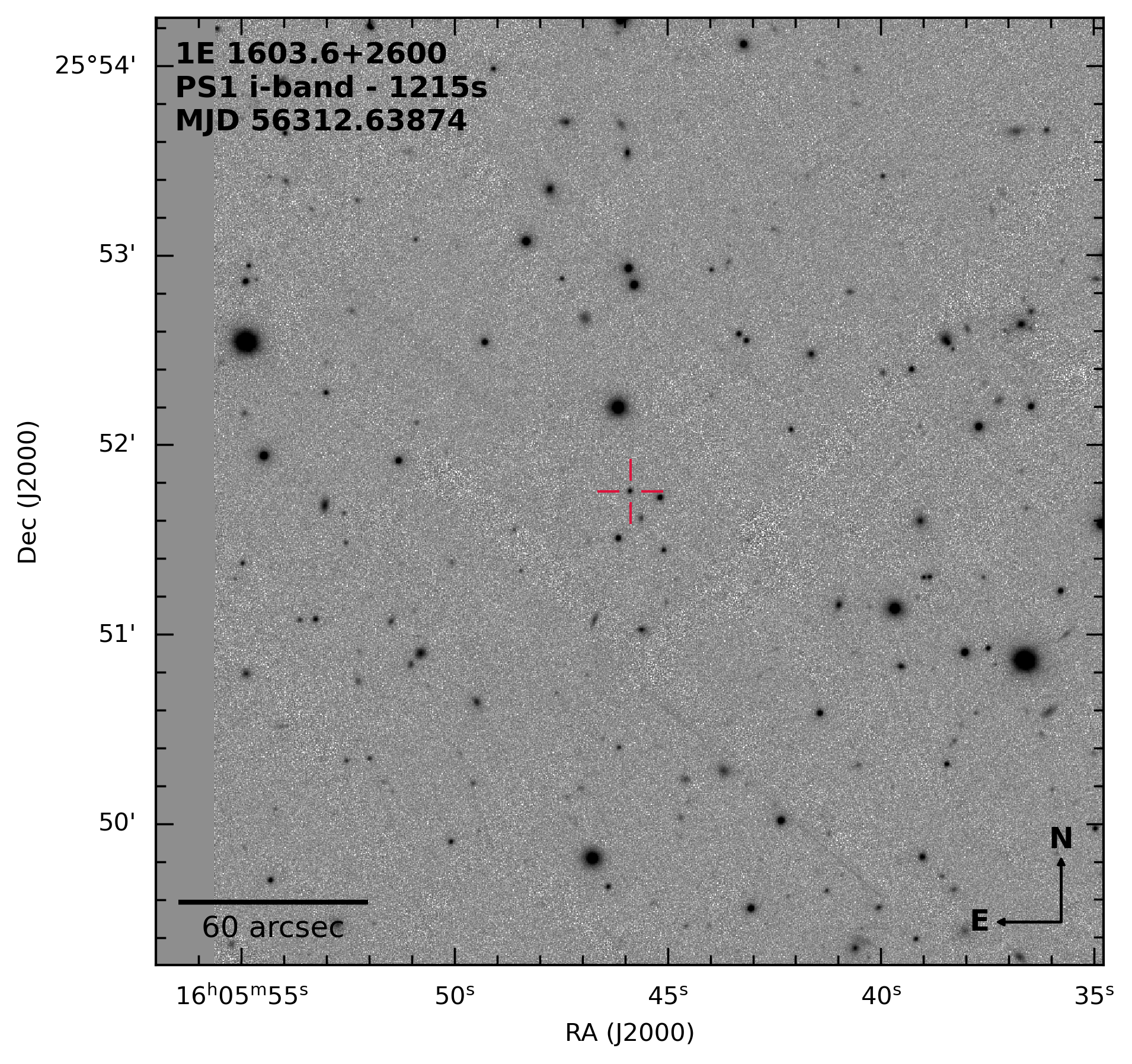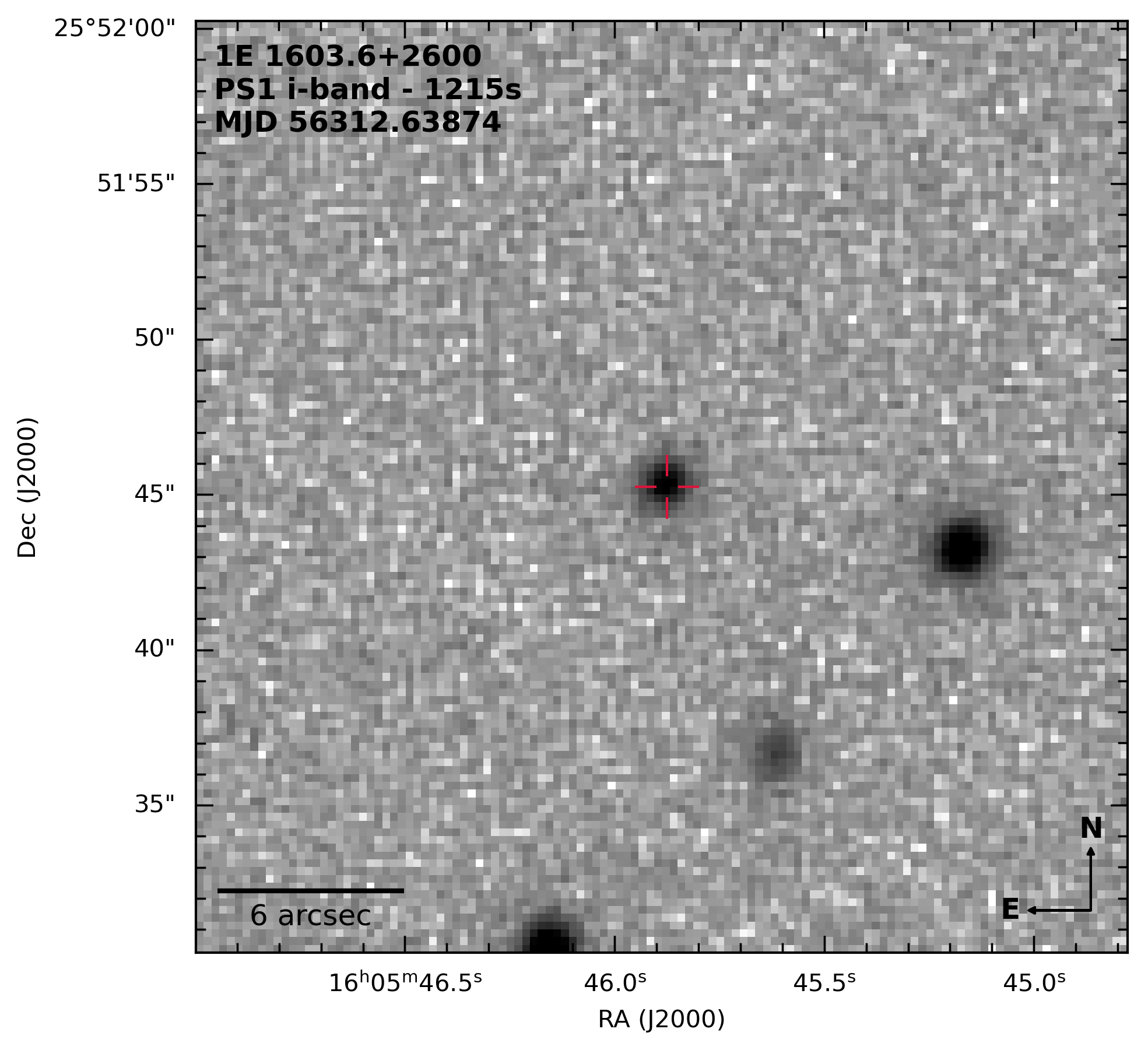« Previous object
Next object »
ID# 22
1E 1603.6+2600
UW CrB, MS 1603.6+2600, MS 1603+260
RA Dec
|
ℓ b
|
Year of discovery: 1990
(Gioia1990 )
| Location in Globular Cluster | ||
|---|---|---|
| Type of accretor | NS | Persistent |
|
Distance [kpc] (other distances) Gaia [kpc] |
Gaia 2.1
+0.7-1.2 2.6+0.8-1.3 |
Arnason2021 Mukai2001Jonker2003aHakala1998Hakala2005 BailerJones2018 |
| z [kpc] | 1.53 | Arnason2021 |
| Orbital period (Porb) [min] | 111.04 | Morris1990 |
| Porb determination method | Optical eclipse | |
| Thermonuclear X-ray burst | short-B | Hakala2005Mukai2001 |
| Peak X-ray flux [erg s-1 cm-2] (2 - 10 keV) |
4.19E-12 | Jonker2003a |
| NH [x1022 cm-2] | 0.15±0.03 | Jonker2003a |
| E(B-V) [mag] | ||
| Magnitude | R=19.4 | Morris1990 |
| Proposed companion |
| Manson2012 report an upper limit of the change of the orbital period of |P| < 4.2E-11. Optical bursts were suggested to arise from reprocessed type I X-ray bursts in the companion star (Hynes2004c) or in the accretion disc (Manson2012). |
| UV | ||
|---|---|---|
| Optical | Hα, Hβ, He II λ4686 emission lines; He I and Ca II absorption lines | Morris1990 |
| X-ray | Evidence for emission lines at ~0.5 keV and ~0.65 keV (N VII, O VIII Lyα ?) | Hakala2005 |
|
|||
|---|---|---|---|
| R~19.4, B=19.37, G=19.53±0.01, BP=19.52±0.05, RP=19.47±0.05, u=19.527±0.028, g=19.546±0.012, r=19.705±0.016, i=19.845±0.027, z=19.911±0.091 | |||
Aladin finding chart
Scroll to zoom. Set survey image in "Manage layers"
Default image: DSS2 Red
1E 1603.6+2600 in Simbad
Pan-STARRS1 finding chart
Click to enlarge in new tab/window


References to finding charts
This research has made use of NASA's Astrophysics Data System (ADS) and the SIMBAD database operated at CDS (Strasbourg, France)
Please acknowledge the use of this catalogue in any published work you derive from it.
Last modified: 09 May 2023.

